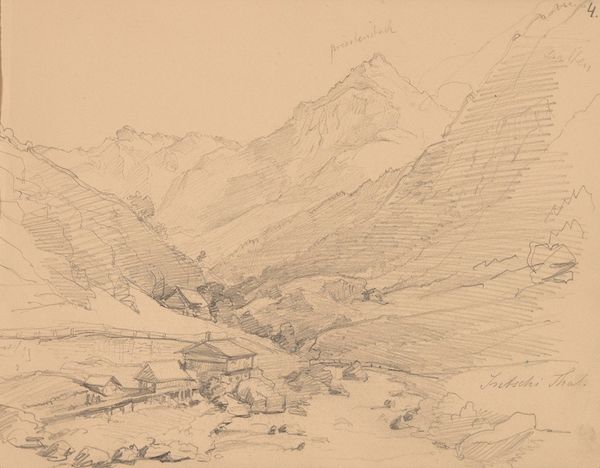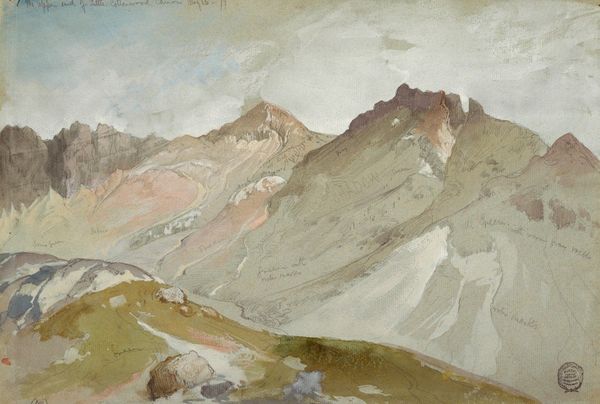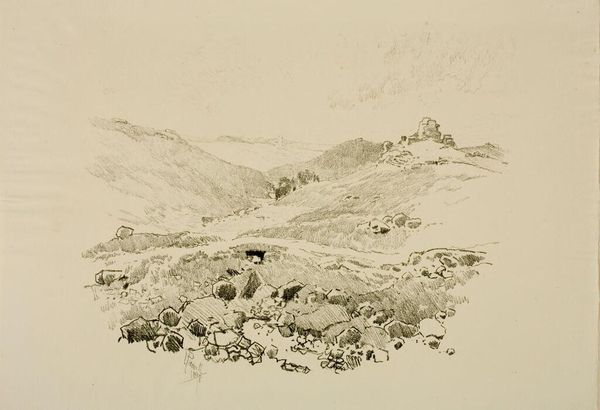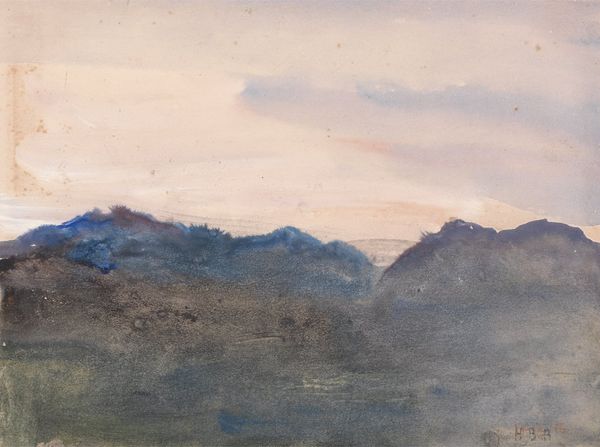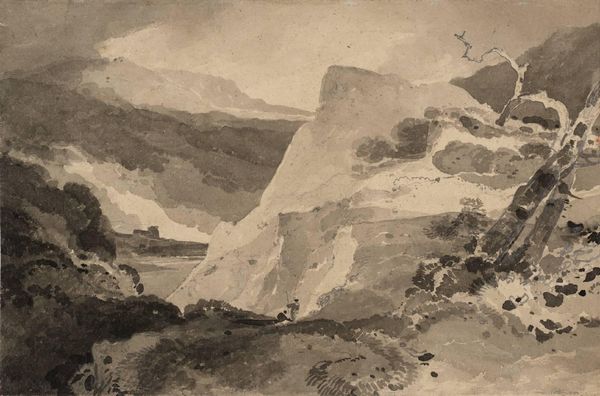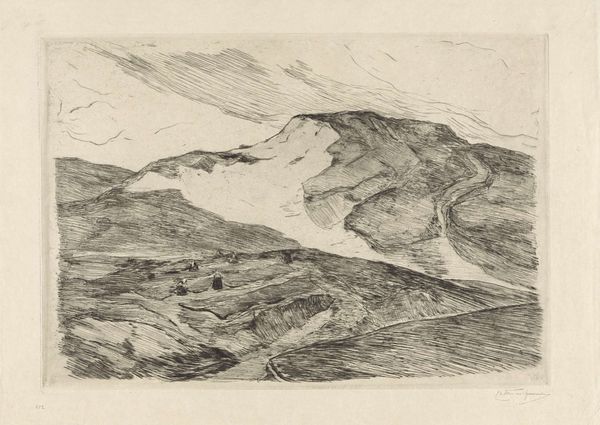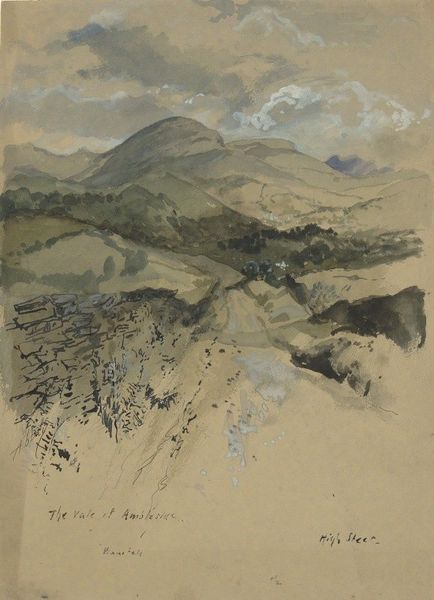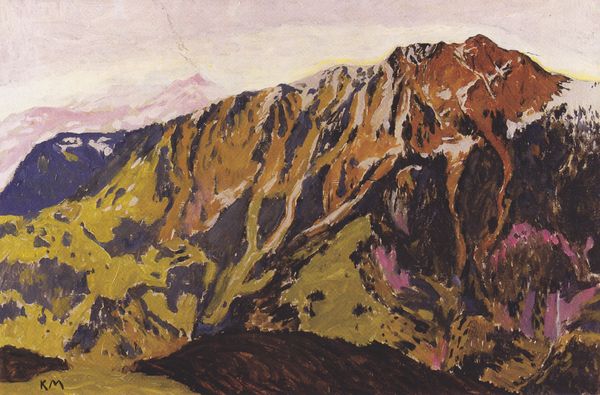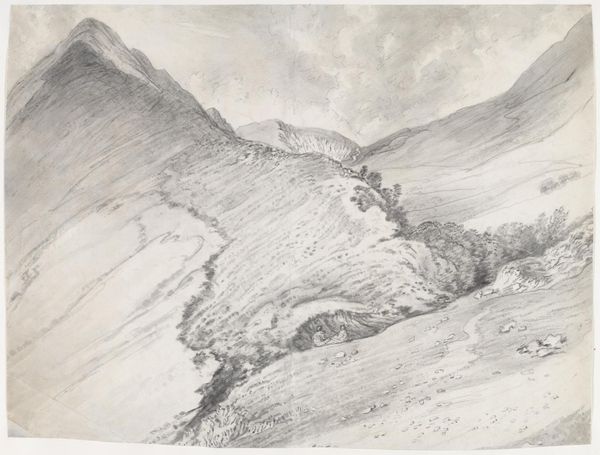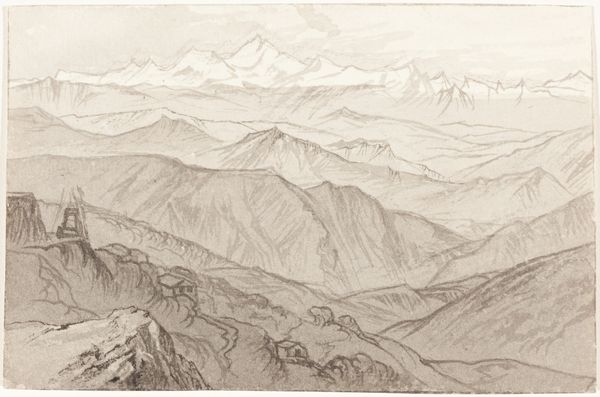
Copyright: Public Domain: Artvee
Thomas Moran created this pastel drawing, *Cliffs of Ecclesbourne Near Hastings*, in 1862. It depicts a landscape near Hastings, England, emphasizing the scale and texture of the cliffs. Moran's work reflects the 19th-century fascination with landscape as a symbol of national identity and the sublime. In England, the Romantic movement had already established a tradition of landscape painting that connected the natural world with emotions, but the Industrial Revolution had dramatically altered the English landscape. Hastings, as a coastal town, was undergoing its own transformation, from a fishing community into a tourist destination. The Ecclesbourne cliffs, as represented by Moran, offer a serene escape from that urban development. To fully understand this work, one might consult travel guides, geological surveys, and social histories of Hastings to understand how Moran’s art both reflected and shaped perceptions of the English landscape. This kind of work highlights the complex interplay between art, society, and the environment.
Comments
No comments
Be the first to comment and join the conversation on the ultimate creative platform.


